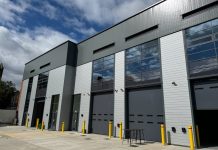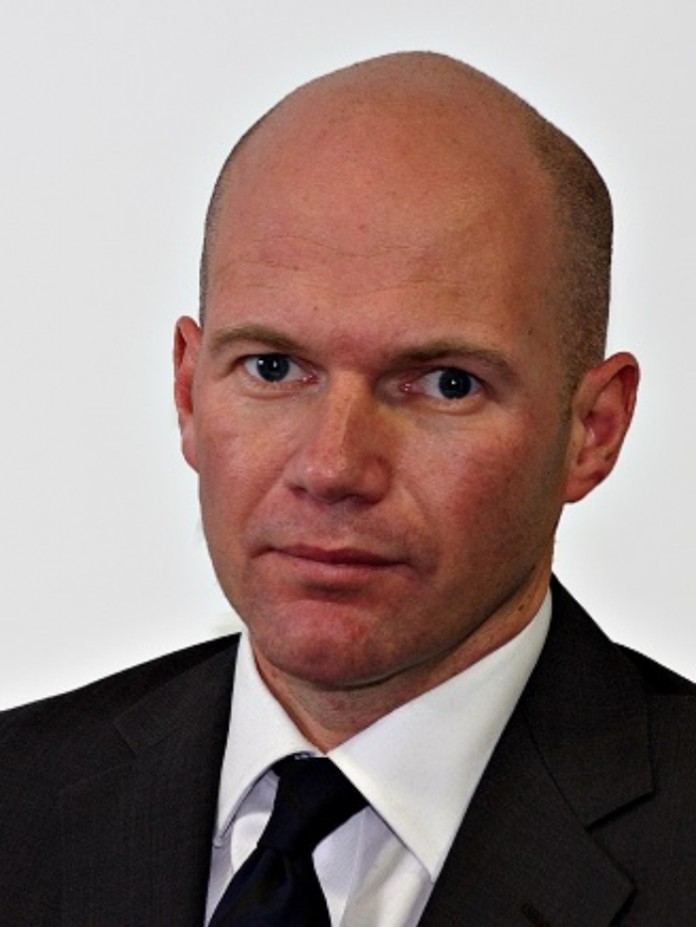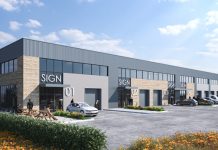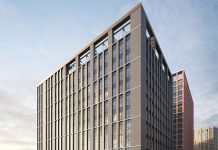Take-up on business parks amounted to 2.1 million sq ft, 9% below the five-year six-monthly average, during the second half of 2015, according to Bilfinger GVA’s latest bi-annual Business Parks Report.
Regionally, the South West and Wales performed the best against its five-year six-monthly average, at 63% above, followed by the North West at 28% and the North East and Yorkshire at 16%. The South East and East, which on average makes up a third of all activity, was 30% below its five-year average. The Midlands and Scotland, the next strongest performers based on past take-up, were also over 20% below average.
In the North West, business parks in Warrington performed strongly with take-up levels doubling since the last survey. Daresbury Park and Birchwood Park have a consistent turnover of deals in the engineering, nuclear and utilities sectors. The parks secured deals of 128,000 sq ft during H2 2015 to occupiers such as AMEC Foster Wheeler Plc who took 25,400 sq ft at Birchwood Park, and Appsense who took 24,600 sq ft at Daresbury Park on a 10 year lease at £15.50 psf.
Construction activity in the market has fallen significantly and almost halved from the recent high of two million sq ft 12 months ago (compared against 4.5 million sq ft in 2009), falling to just over one million sq ft, of which 44% is speculative. This is virtually all concentrated in the South East.
In the North West, looking further along the development pipeline, the intention to build over 400,000 sq ft of speculative space has been announced at Airport City, Manchester Airport. Wuhan Square and Shenzen Gardens is a joint venture partnership between a Chinese construction company and Manchester Airport Group (MAG). The regeneration project is expected to provide a commercial base for Chinese businesses.
UK business park availability fell to 15.1 million sq ft (15%) at the end of 2015, however the decline in availability is not consistent across the regions. Whilst this has fallen in the North West, Scotland and Yorkshire and the North East, it has increased in the South East, Midlands and South West. However, the Midlands remains the only area where availability is at or about 9% which we have consistently seen as the threshold below which rental growth kicks back in.
Key schemes remain underway, including two comprehensive speculation refurbishments at Stockley Park, Heathrow, totalling 240,000 sq ft, Rockspring and Clearbell’s 144,000 sq ft Bower building, and the 100,000 sq ft Roundwood building. Also, in West London, two new buildings amounting to 100,000 sq ft are close to completion in Uxbridge Business Park.
Christopher Cheap, Senior Director at Bilfinger GVA Manchester, said: “The success of business park lettings in the North West shows that demand for out of town quality grade A stock remains strong but it is clear that occupiers are gravitating towards schemes that offer more integrated public transport and amenity.
“Clustering remains a key demand driver and we anticipate this will continue to be the case in locations such as Manchester Airport, Alderley Park and Birchwood. The importance of access to a mobile, skilled labour pool especially in the technology, engineering and science sectors is critical.”
Last year, investment in business parks across the UK was the highest it has been since 2006; amounting to £2.5 billion, up from £2.2 billion in 2014. Overseas investors accounted for 30% of all transactions, while UK property companies and institutional investors both maintained a strong presence, accounting for around 25% of value each.
This high level of investor demand continued to apply downward pressure to business park yields, which fell by 78 basis points over the year. The annual total return for UK business parks peaked in 2014 at 21.4%, moderating to 13.5% for 2015 as the rapid pace of downward yield movement eased.
Christopher added: “We have seen continued demand for good quality secondary assets from private UK property companies and private equity which have been attracted by higher yields. However, this interest remains focused on established business park locations with proven occupational markets.”






















